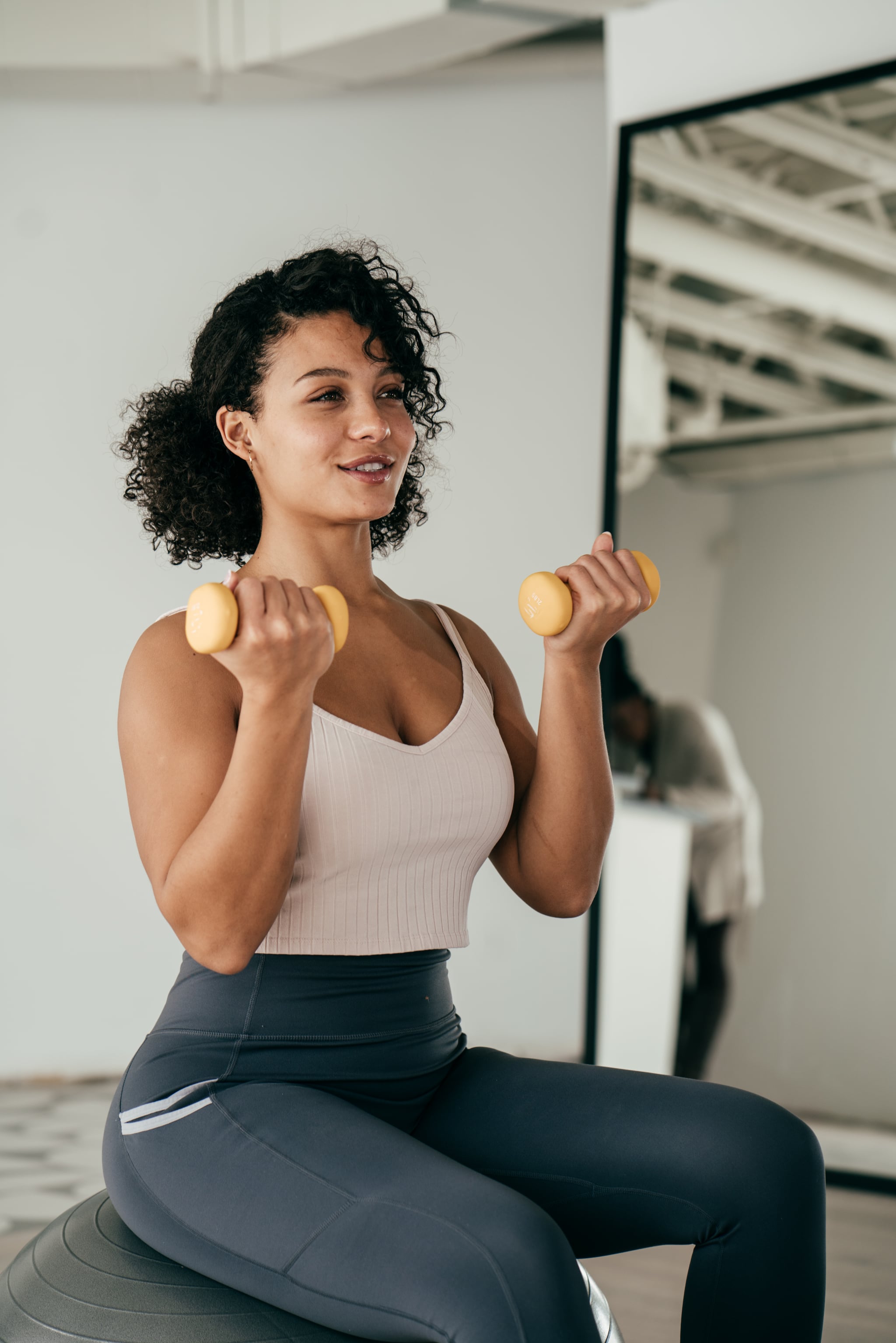

If you're used to working out at a gym, with all the machines, equipment, and space that comes with it, adjusting to at-home fitness is a challenge. Sure, no-equipment workouts will keep you moving and sweating, but I won't deny that I've been missing the weight rack. Lifting does amazing things for your body and I miss progressing to heavier weights, getting stronger, and building muscle.
Instead of weights, I've been lifting (don't laugh) cans of chickpeas during my morning workouts. Even if you have a better home gym setup than me, or you managed to buy some dumbbells before they sold out everywhere, chances are whatever weights you have are lighter and less varied than you're used to. It's frustrating to drop down to a lighter weight and feel like you're stalling your progress or not getting the most out of your at-home workouts. But according to Tom Holland, MS, CSCS, exercise physiologist and Bowflex fitness adviser, those lighter dumbbells can still help you strengthen your muscles.
Can I Get Stronger With Light Weights?
"While lifting heavier weights is a simple way to increase your strength, you can also do so with lighter weights and your bodyweight," Holland told POPSUGAR. Repetitions, sets, and load (weight) are the factors that determine how effective a strength workout will be, he explained. "When the load is lighter, you can increase the stimulus by increasing one or both of the other two variables." In other words, if you can't increase your weight, you can still make your workout challenging by upping the reps, the total sets, or both.
"Even if you're used to working out with heavier weights, adding in a lighter weight workout can provide much-needed variation, challenging your muscles in a new way," Holland said.
How to Work Out With Light Weights
Holland suggested a few effective ways to make your workout more challenging when you only have light weights (or, you know, cans of chickpeas).
- Do more reps. When you're lifting moderate to heavy weights, you should do three to five sets of six to 12 reps per exercise. Try going a little higher when you're working out with lighter weights - enough reps that the workout is challenging, but you can still maintain your form.
- Incorporate isometric holds into your exercises. Isometric holds force you to maintain the stress on your muscles by pausing when the work is the hardest. You can mix them into exercises that aren't isometric by nature to increase the burn in your muscles. Try holding for three to five seconds at the top of a lateral raise, pausing in the middle of a bicep curl, or holding the squat in your burpee.
- Slow down your reps. "Try using a five second up, five second down protocol to really up the intensity," Holland said.
- Double up your dumbbells. If you really want a challenge, Holland said, hold both weights in one hand for single-arm moves like a triceps kickback. You can also double up for moves like goblet squats, Russian twists, and low-to-high woodchops. Make sure you can safely hold both weights at once before doubling up for an exercise.
Holland said that circuit training is a great way to maximize results with lighter weights. (Here's an example of a circuit workout you can do with weights or weight substitutes.) "You can also use lighter weights with certain moves in Pilates and yoga, such as plank rotations and Pilates 100s," Holland said.
To sum it all up, if you're left without your usual selection of heavier weights, grab your lighter dumbbells (or dumbbell substitutes - here are a few to try) and get creative with your reps, tempo, and exercises to get the same strengthening burn you know and love.






0 comments :
Post a Comment